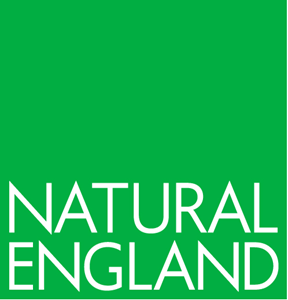The outcome of supplementary badger control 2019
Published 27 March 2020
Applies to England
Natural England Chief Scientist’s advice on the outcome of supplementary badger control 2019
In July 2017, Defra announced that as part of the Government’s 25-year strategy to eradicate bovine tuberculosis and protect the livelihoods of dairy and beef farmers, Natural England could license and authorise local farmers and landowners to carry out Supplementary Badger Control operations across two areas in Gloucestershire and Somerset. This authorisation was extended to permit licensing a third area in Dorset in 2019.
Badger control licences were issued in the two areas in Gloucestershire and Somerset in August 2017 and operations were authorised to take place for a third year in each area. A third licence was issued in June 2019 for an area in Dorset and operations were authorised to take place between 20 June 2019 and 12 January 2020. Cage-trapping and humane dispatch of trapped badgers by shooting ceased in all three areas on 30 November 2019. Controlled shooting of badgers ceased on 30 November 2019 in Gloucestershire, on 15 December in Somerset and on 12 January 2020 in Dorset. This document sets out the outcomes of these operations in those areas.
Effectiveness
Estimates for the number of badgers to be removed from each licensed area were made by Defra / APHA for the purpose of giving advice to Natural England for the setting of minimum and maximum numbers. The estimates, methodologies and rationale used were published in September 2019 .
As in previous years, Natural England monitored the progress in licensed areas. The numbers of badgers removed were reported in accessible land parcels on a regular basis. This provided information on the number of badgers dispatched, the spatial distribution of badger control activity and the effort that was used. This enabled an assessment of the progress that each badger control company was making towards achieving the minimum and maximum numbers, and allowed Natural England to assess whether resources were being effectively deployed across accessible land.
The number of badgers removed against the minimum and maximum number is presented in Table 1 for each licensed area.
Table 1: Total number of badgers removed per licensed area
| Area | Minimum number | Maximum number | Badgers removed | Removed by controlled shooting | Removed by cage trapping |
|---|---|---|---|---|---|
| Area 1 – Gloucestershire | 125 | 540 | 99 | 80 | 19 |
| Area 2 – Somerset | 109 | 578 | 93 | 74 | 19 |
| Area 3 – Dorset | 163 | 383 | 125 | 94 | 31 |
Safety of the operations
Operations in all licensed areas were carried out to a high standard of public safety. In relation to the use of firearms, no incidents affecting public safety were reported in any of the areas.
Humaneness of controlled shooting
Natural England ensures compliance with the standards set out in the Best Practice Guides for the controlled shooting of free-ranging badgers and cage trapping and dispatch of badgers through risk-based monitoring. All contractors in licensed areas had completed the required training. No incidents affecting humaneness were reported.
Sett surveys
Following the advice provided by the Natural England’s Chief Scientist in February 2019, sett surveys were undertaken in the Gloucestershire and Somerset areas prior to operations commencing in 2019 and some further sett surveys were also undertaken in January 2020 in the three areas after 2019 operations has ceased. Active setts were identified in all three areas which confirmed that badgers were still present on accessible land.
Conclusions
The badger population reductions achieved in the three areas have been evaluated on the basis of the numbers and locations of badgers culled, the numbers culled against effort over time, and our assessments of the level and spatial distribution of culling effort deployed.
Based on the available information, I have concluded that whilst none of the companies reached the minimum number that was set, the spatial distribution of badger control activity; the effort that was used; and the residual level of badger activity in the areas, suggests that the reduced badger population required by the policy has been maintained in all three areas; and that effective supplementary culls have taken place.
The minimum and maximum numbers for 2020 will be set in line with Defra’s commitments under the Bern Convention. We will continue to ensure that local extinction does not occur in order to protect the UK’s badger population. We will also continue to undertake surveillance and monitoring of other protected species in order to ensure that we avoid any adverse consequences on them.
Dr Tim Hill Chief Scientist, Natural England
Chief Veterinary Officer’s advice on the outcome of supplementary badger control 2019
The aim of supplementary badger control is to preserve the disease control benefits which are expected from the completion of a four-year badger control operation. In order to achieve this, supplementary control needs to be effective in maintaining a reduced level of badger population.
The badger population reductions achieved in the three areas have been evaluated on the basis of the numbers and locations of badgers culled, the numbers culled against effort over time, and Natural England’s independent assessments of the level and spatial distribution of culling effort deployed.
Based on the available information, the Chief Veterinary Officer’s (CVO) advice is that all three areas delivered sufficient levels of effort and coverage required to be confident of achieving disease control benefits despite not having met their minimum number. A reduction in the badger population has been maintained in the three areas and an effective supplementary cull has taken place.

